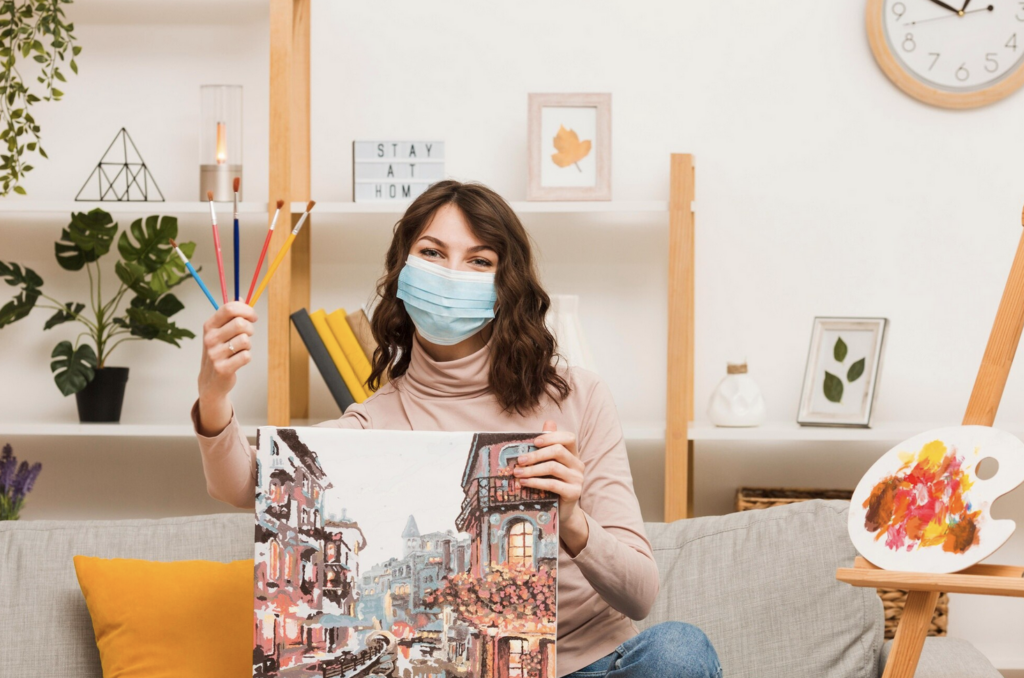
The Psychology Behind Color Choices
Colors are more than just decorative elements; they have the power to influence our emotions and moods. Understanding color psychology can transform any living space by creating an atmosphere that suits your lifestyle. For instance, calm blues and serene greens are often used in bedrooms to promote relaxation and tranquility, while bold reds and yellows can invigorate spaces like kitchens and creative areas.
Lighting and Its Effect on Color Perception
Understanding how lighting impacts color perception is vital for ensuring satisfaction with your paint choices. Different lighting conditions can cause colors to appear drastically different. When considering a new color scheme, consulting a professional painter who can provide expert guidance on selecting hues that resonate with your style and complement your home’s architecture may be beneficial. For example, a color that looks perfect in the natural morning sunlight might seem too dull under incandescent indoor lighting. Conversely, bright, artificial lighting can make warm-toned paint appear more remarkable. As suggested by The Spruce, testing paint samples at different times of the day and in varying lighting is essential for making informed decisions that will remain pleasing under all lighting conditions.
Trendy Colors vs. Timeless Classics
The decision to incorporate trendy colors or stick with timeless classics can significantly impact the longevity and appeal of your home’s interior design. Trendy colors offer a modern touch, infusing your space with a contemporary vibe. However, these colors may quickly become outdated as trends shift. On the other hand, timeless hues like whites, beiges, and grays maintain their appeal across decades, providing a neutral backdrop that adapts to changing trends. When choosing colors, consulting a professional painting company can provide valuable insights and expertise, ensuring that your selections enhance your home’s aesthetic and value.
Choosing the Right Finish for Each Room
Although color is frequently the main consideration when choosing paint, the finish holds equal significance. Various finishes fulfill distinct practical and aesthetic functions. For locations with high foot traffic, such as hallways and children’s rooms, satin or semigloss finishes are recommended because of their durability and low maintenance. These finishes withstand wear and tear while allowing for easy removal of scuffs and stains. In contrast, a flat or matte finish can add depth and sophistication to rooms with less activity, such as formal living rooms or adults’ bedrooms, by providing a smooth, non-reflective appearance. The insights shared by Houzz suggest mixing contemporary shades with enduring classics to achieve a balanced and stylish look that lasts.
Considering Durability in Paint Selection
Durability is a key factor in paint selection, especially for households with children or pets. Paints designed for high durability ensure walls can withstand the everyday rigors of active family life while maintaining their visual appeal. Stain-resistant paints are particularly beneficial in kitchens, dining rooms, and playrooms, where spills and fingerprints are more likely. These specialized paints help maintain a clean and fresh appearance, reducing the need for frequent touch-ups or repainting.
Common Mistakes to Avoid When Selecting Paint Colors
One common mistake homeowners make when selecting paint colors is isolating their choices from the broader home color palette. It’s essential to consider how a new shade complements existing colors throughout the home to ensure a harmonious flow between rooms. Please do so to avoid jarring transitions and a disjointed appearance. Coordinating colors with existing elements such as flooring, furniture, and decor can enhance your home’s overall cohesion and aesthetic appeal.
Real-Life Inspirations: Lessons from Famous Homes
For those seeking inspiration, iconic homes offer valuable insights into the masterful use of color. The White House, for example, employs historical colors to augment its classic architecture, creating an inspiring yet traditional look. Similarly, Frank Lloyd Wright’s Fallingwater skillfully integrates natural tones that reflect the surrounding landscape, demonstrating how harmonizing indoor color schemes with outdoor elements can seamlessly integrate nature and design. Analyzing these famous spaces can inspire you to use color to reflect personality and purpose in your home.
Practical Tips for a Successful Painting Project
Preparation is essential for a successful painting endeavor. Preparing surfaces by cleaning and priming ensures a smooth base for paint application, helping to prevent issues such as peeling or cracking. Choosing the right equipment, like high-quality brushes and rollers, helps obtain a professional look. Additionally, allowing ample drying time between coats is critical, as rushing this step can lead to problems like bubbling and uneven coverage. Concentrating on these essential aspects guarantees a seamless experience and a pleasing outcome that refreshes your environment and improves your home’s appearance.

